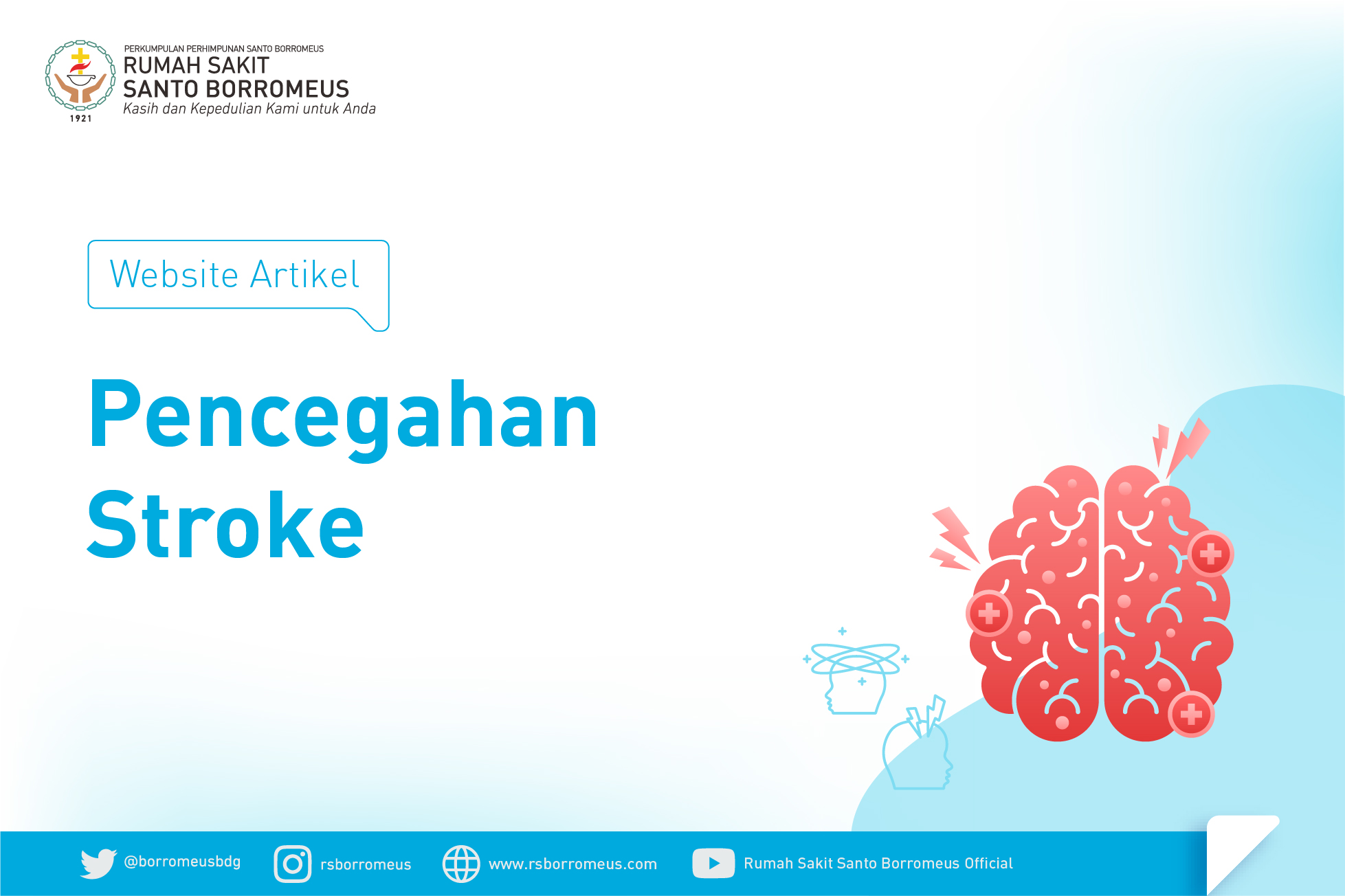
Stroke Prevention
Stroke is a disruption in blood flow to the brain, can be in the form of blockage or rupture of blood vessels, and can cause damage to brain nerve cells. Symptoms vary depending on which brain structure is affected. Stroke is the second leading cause of death worldwide.
Therefore, stroke awareness is a concern for many parties. No wonder to raise awareness about stroke is also known as World Stroke Day which is commemorated every October 29.
Controllable risk factors (modifiable)
› Obesity
› Diabetes Mellitus
› Hypertension
> Heart disease
Uncontrollable risk factors (non-modifiable)
› Age
› Race
› Gender
› Parental history of stroke
Primary Prevention in Stroke
› Manage a Healthy Eating Pattern
Foods that help lower cholesterol levels: fiber in whole grains (brown rice, bulgur, corn and wheat), oats, beans (soybeans). Mechanism of action increases bile acid secretion, increases antioxidant activity
> Stress Management and Adequate Rest
Get enough rest and sleep regularly between 6-8 hours a day
> Regular medical check-ups and following your doctor's advice on diet and medication
Other Primary Prevention Can Be Done With 3M
› Aavoid: cigarettes, mental stress, drinking coffee and alcohol, obesity, and classes of drugs that can affect the cerebrovascular system (amphetamine, cocaine, and the like)
› Reduce: excess intake of fat, calories, salt and cholesterol
›Montrol or control: hypertension, diabetes mellitus, heart disease and atherosclerosis, blood fat levels, consuming a balanced diet, and regular exercise 3-4 times a week
Secondary Prevention of Stroke
› The role of family and a supportive environment in overcoming stroke risk factors and assisting in the rehabilitation process.
› It is recommended to examine the blood vessels of the neck and brain (USG carotid, TCD/TCD, CT angiography, cerebral arteriography) to evaluate blood vessel disease that causes stroke
Tertiary Prevention of Stroke
Of the 4 main factors that influence disease, namely:
› Lifestyle
› Environment
› Biological
> Health services.
This tertiary prevention is rehabilitation carried out on stroke patients who have experienced paralysis in their bodies so that it does not get worse and can transfer the function of paralyzed limbs to normal limbs.
Material by: Dokter Spesialis Saraf RS Santo Borromeus



